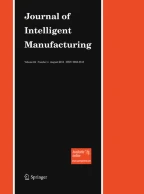Abstract
This study formulates a model for analyzing eco-environmental impact on global supply chain network. The multi-criteria optimization model is applied to seek optimal solutions that not only can achieve predetermined objectives, but also can satisfy constraints for multi-product problems. The overall optimization is achieved using mathematical programming for modeling the supply chain functions such as location, inventory, production, distribution functions and transportation mode selections. Then, the supply chain model is formulated as a minimization problem for costs and environmental impacts. Herein, the solution is the flow of goods in global supply chain environment in different periods of time over one year. Furthermore, the numerical values obtained from a real company are applied to these mathematical formulations to test its usability. The testing is conducted in four different cases that include two combinations, no due date constraint and due date constraint, without connection of distributor and with connection of distributors. The results from these experiments can help in determining the best transportation routes, inventory levels, shipment quantity, and transportation modes. Specifically, the results propose a new configuration for designing global supply chain for the case company that could minimize economical and environmental impacts problems simultaneously.
Similar content being viewed by others
References
Beamon B. M., Fernandes C. (2004) Supply-chain network configuration for product recovery. Production Planning and Control 15(3): 270–281
Belgasmi N., Saıd L. B., Ghedira K. et al (2008) Evolutionary multiobjective optimization of the multi-location transshipment problem. Operation Research International Journal 8: 167–183
Bojarski A. D., Laínez J. M., Espuna A., Puigjaner L. et al (2009) Incorporating environmental impacts and regulations in a holistic supply chains modeling: An LCA approach. Computers and Chemical Engineering 33: 1747–1759
Bottani E., Montanari R. (2010) Supply chain design and cost analysis through simulation. International Journal of Production Research 48(10): 2859–2886
Business Link website. (2010). http://www.nationsencyclopedia.com/Europe/France-CUSTOMS-AND-DUTIES.html, Accessed May 14, 2010.
Chan F. T. S., Chan H. K. (2005) Simulation modeling for comparative evaluation of supply chain management strategies. Journal of Advanced Manufacturing Technology 25(9): 998–1006
Cholette S., Venkat K. (2009) The energy and carbon intensity of wine distribution: A study of logistical options for delivering wine to consumers. Journal of Cleaner Production 17: 1401–1413
Dotoli M., Fanti M. P., Meloni C., Zhou M. C. et al (2006) Design and optimization of integrated E-supply chain for agile and environmentally conscious manufacturing. IEEE Transactions on Systems, Man, and Cybernetics—Part A: Systems and Humans 36(1): 62–75
Encyclopedia of the Nations. (2010). http://www.nationsencyclopedia.com/Europe/Germany-CUSTOMS-AND-DUTIES.html, Accessed May 14, 2010.
Europa Commission. (2010). http://ec.europa.eu/internal_market/top_layer/index_1_en.htm, Accessed May 14 2010.
Gumus A. T., Guneri A. F., Keles S. et al (2009) Supply chain network design using an integrated neuro-fuzzy and MILP approach: A comparative design study. Expert Systems with Applications 36: 12570–12577
Handfield R., Sroufe R., Walton S. et al (2005) Integrating environmental management and supply chain strategies. Business Strategy and the Environment 14: 1–19
Harrison T. P. (2001) Global supply chain design. Information Systems Frontiers 3(4): 413–416
International Energy Agency report. (2009). Green supply chain & logistics climate protection through process optimization: A key performance indicator (KPI) to assess CO2 emissions. Bayer Business and Technology Services report.
Jang Y. J., Jang S. Y., Chang B. M., Park J. et al (2002) A combined model of network design and production/distribution planning for a network. Computer and Industrial Engineering 43: 236–281
Kim I. Y., de Weck O. L. (2005) Adaptive weighted-sum method for bi-objective optimization: Pareto front generation. 45th AIAA/ ASME/ASCE/AHS/ASC Structures, Structural Dynamics, and Materials Conference 29: 149–158
Luo Y., Zhou M., Caudill R. J. et al (2001) An integrated E-supply chain model for agile and environmentally conscious manufacturing. IEEE/ASME Transactions On Mechatronics 6(4): 377–386
Magnusson P., Baack D. W., Zdravkovic S., Staub K. M., Amine L. S. et al (2008) Meta-analysis of cultural differences: Another slice at the apple. International Business Review 17: 520–532
Meixell M. J., Gargeya V. B. (2005) Global supply chain design: A literature review and critique. Transportation Research Part E 41: 531–550
Nikbakhsh E. (2009) Green supply chain management, supply chain and logistics in national, international and governmental environment. : Physica-Verlag HD,
Piecyk M. I., McKinnon A. C. (2010) Forecasting the carbon footprint of road freight transport in 2020. International Journal of Production Economics 128(1): 31–42
Prasad S., Sounderpandian J. (2003) Factors influencing global supply chain efficiency implications for information systems. Supply Chain Management: An International Journal 8(3): 241–250
Reiter S. B., Frazzon E. M., Makuschewitz T. et al (2010) Integrating manufacturing and logistics systems along global supply chains. CIRP Journal of Manufacturing Science and Technology 2(3): 216–223
Sundarakani B., de Souza R., Goh M., Wagner S. M., Manikandan S. et al (2010) Modeling carbon footprints across the supply chain. International Journal of Production Economics, 128(1): 43–50
Viswanadham N., Gaonkar R. S. (2003) Partner selection and synchronized planning in dynamic manufacturing networks. IEEE Transactions on Robotics and Automation 19(1): 117–130
Walton S. V., Handfield R. B., Melnyk S. A. et al (1998) The green supply chain: Integrating suppliers into environmental management processes. International Journal of Purchasing and Materials Management 34(2): 2–11
Yang G. F., Wang Z. P., Li X. J. et al (2009) The optimization of the closed-loop supply chain network. Transportation Research Part E 45: 16–28
Author information
Authors and Affiliations
Corresponding author
Rights and permissions
About this article
Cite this article
Le, T.P.N., Lee, TR. Model selection with considering the CO2 emission alone the global supply chain. J Intell Manuf 24, 653–672 (2013). https://doi.org/10.1007/s10845-011-0613-6
Received:
Accepted:
Published:
Issue Date:
DOI: https://doi.org/10.1007/s10845-011-0613-6
